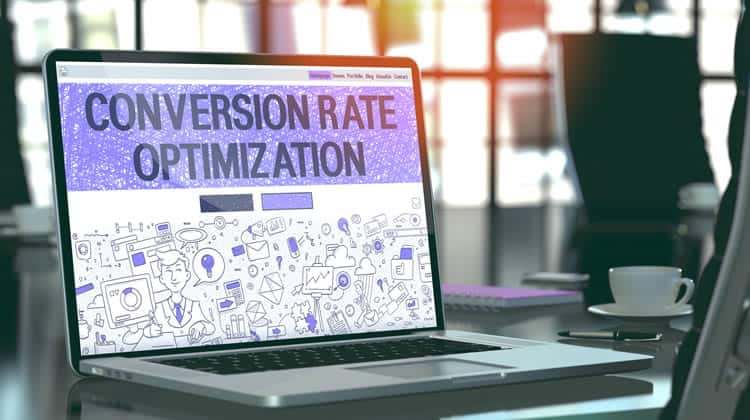
You run a small service-oriented business, and you’re well into your shiny new online marketing campaign. You have set up your contact channels, and produced some fresh, compelling content for your company’s website. You have “engaged” with your demographic and met them where they are”, you have done your SEO homework and website usability testing and you have seen a clear increase in your website’s traffic and engagement as a result. So what more can you do to convert users into customers?
So where’s the increased revenue?
If you are not seeing an increase in your bottom line to go along with the increase in your web traffic, you may be overlooking the importance of Conversion Rate Optimization (CRO). CRO is objective driven so if for example you have a website whose objective is to sell mobile loans, your conversion would be measured by how many users actually sign up for these loans. Search Engine Optimization (SEO), of course, is what helps people find you on the Internet, and it is what many businesses focus on. People cannot use your services if they do not know you exist. Usability, on the other hand will enable your website visitors to achieve their goals.
Too many small and medium sized businesses stop at SEO and basic website usability principles, and that is a mistake. Conversion rate optimization is what makes sure that as many prospects as possible turn into customers. Finding you is important, but if none of the people who find you end up using your services, you have wasted your time and money.
Below are 5 simple Conversion Rate Optimization Tips to help you convert online window shoppers into real-life revenue.
1) Know your target demographic
If you have done your SEO research then you have already got this one covered. If you know what will drive people to your website, you should know what will drive them to hand over their money or conversely, what is stopping them from doing so. If you are targeting users who are interested in cash advances, then your strategy might involve studying how users with medium income interact with your website. If potential customers lack trust in your brand, introducing trust-establishing mechanisms such as guarantees, FAQs, policies, customer care and a clear and consistent brand identity will surely help to build that trust..
2) Stay on topic
Once you have identified what drives your users into becoming customers, focus on those things and only those things. If potential customers have indicated they are concerned about quality, reassuring them about the quality of your products, or talking about your money back guarantee are good ideas. Talking about your CEO’s hobbies, while possibly interesting, simply isn’t relevant.
3) Do not ask for unnecessary information
At no point during the conversion rate optimization process should you be asking customers for information that you do not actually need. This also creates a trust issue. You might need to ask the user’s name and phone number, but you almost never need to know their income range or profession. That information helps you, not your customer, and so you should never ask for it especially during the early stages of your conversion process.
4) Set realistic goals
Goals in this context refer to what we mean by “conversion”. If you sell luxury cars, you are unlikely to sell very many of them directly through your website. A conversion in that case might be nothing more than getting a customer’s contact information and possibly a request for a test drive. If you run a hair salon, a conversion could be having a customer book an appointment.
5) Call to action
The most important aspect of conversion rate optimization is the call to action, but it is also very often misunderstood. Ending some marketing copy with “Call now to book an appointment” is unlikely to be very successful. A good call to action not only prompts the customer to take action, it also enables them to do so. A good example of this is using an appointment scheduling widget, allowing potential customers to schedule their own appointments easily and, most importantly, while they are still on your website.
Conversion rate optimization is a complex aspect of marketing that is different for every business. Take the above 5 tips and tailor them to your business’ individual needs and you will see the difference where it matters: your bottom line.
Want to learn more?
Want to get an industry-recognized Course Certificate in UX Design, Design Thinking, UI Design, or another related design topic? Online UX courses from the Interaction Design Foundation can provide you with industry-relevant skills to advance your UX career. For example, Design Thinking, Become a UX Designer from Scratch, Conducting Usability Testing or User Research – Methods and Best Practices are some of the most popular courses. Good luck on your learning journey!
(Lead image: Depositphotos)
